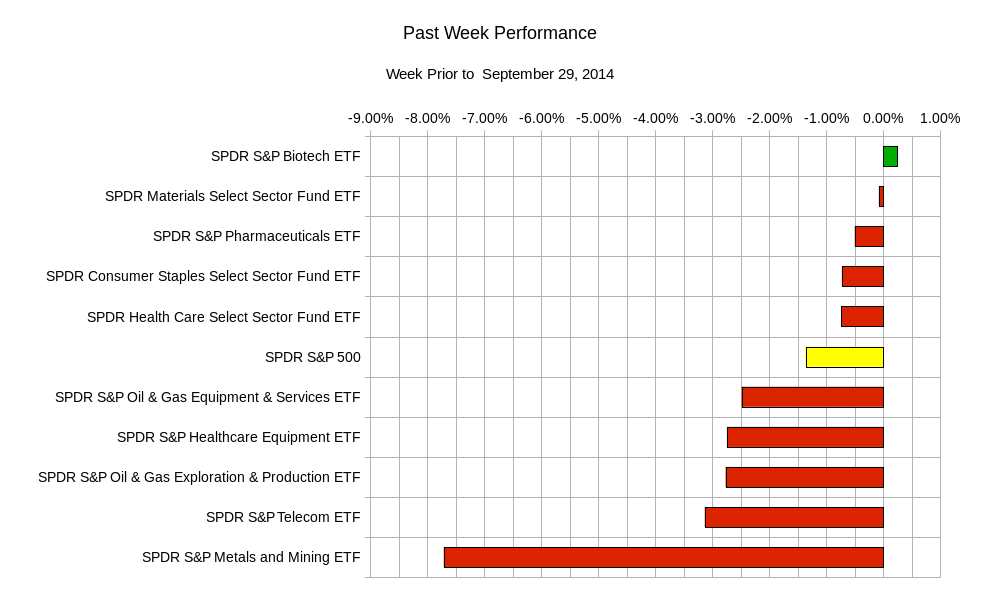With a recent sell off in the equities market, a new quarter on the horizon, and a wealth of economic data coming down the news pipeline there are no shortage of reasons to be actively watching this market.
Charts Courtesy of Yahoo Finance
The question is: are you ready to be a participant or are you ready to wait out all of the “market noise”? Certainly, the media will have plenty of opportunities for stories in the upcoming week. Along with that, the recent spike in volatility would make even the sleepiest of traders wake up.
The past week was full of mixed signals as good news for the economy may equate to bad news for interest rate and equity investors. In the US, upward revisions to the second quarter GDP shows that the US economy has picked up its pace from the first quarter weather bogged story. It also represents the fastest growth pace since the end of 2011. Furthermore, the US Weekly jobless claims remained under the psychological limit of 300,000. The combination of these data points may be sparking fears that a short term interest rate hike in the US may be looming. How the equity market will react to an increase in rates is anybody’s guess. One thing is for sure: banks, pension funds or institutions may ask themselves to reassess the value of equities if the cost of funds to invest is higher due to a rate increase. These entities are borrowing at near zero rates and can use the money to invest in a bullish stock market that can’t seem to lose. If the “cost to borrow” increases then it makes sense that asset allocations will be re-evaluated. If it costs 2% to invest in a market, then you might just reconsider the risks since there is a 2% cost to recover from the beginning.
Geopolitical tensions also seemed to sneak into the negative news party as the Russia versus the West diatribe continues. The shadow of ISIL has also been attention grabbing.
The Apple release of its latest mobile operating system did not go as smoothly as planned. The software made some mobile devices drop calls and data connections regularly. Perhaps many traders were using iPads and iPhones and the market buy orders did not get through. In all seriousness, the downward pressure on one of the biggest components of the Nasdaq and S&P 500 indices contributed to the sell off.
The Rosh Hashanah holiday at the end of the week also kept some market participants away from the markets.
The new quarter may provide some inspiration for those money managers looking to take advantage of the recent dip. Managers can buy previously performing securities at a discount in hopes of impressing clients and taking in more performance based fees if things return to “normal” or better.
The confluence of all of these forces and an upcoming week of data make this a good week as any to be observing the markets and participating if your trading strategies call for it.
The data begins with:
Monday- German Index of Consumer Prices, US Personal Income, US Personal Spending, US Pending Home Sales, Japan Unemployment, and Japan Industrial Production; Tuesday- German Unemployment, UK GDP, Euro-zone Consumer Price Index, and US Consumer Confidence; Wednesday- Euro-zone GDP, and US ISM Manufacturing PMI; Thursday- US Weekly Jobless Claims, and ECB Interest Rate Decision and Policy Statement; Friday- Japan Services PMI, Euro-zone Retail Sales, and the US Monthly Employment Report.
So there is no lack of data to dull the market this week. In terms of last week’s performance we see the broad based sell off in the S&P sectors. However, it is interesting that speculative sectors such as Biotech and Pharmaceuticals went relatively unscathed. Perhaps this may be a symptom of a lack of buyers more than heavy, scared selling.
In terms of the upcoming week the ranges for the SPY, S&P 500 ETF may be between USD$193.50 and USD$201.00; the GLD, gold ETF may see USD$114.50 and USD$120.20; USO, the US oil ETF might land in between USD$34.20 and USD$36.30.
Many times when the market seems prepped to make a move in either direction because of news, data, or price volatility, it is inviting for traders to jump into the fray. There is certainly an increased probability of price movements that are actionable. The important thing to remember is how much pain are you willing to tolerate when things go wrong. Similarly, it is important to think of an exit strategy when things go right. The possibility of being whipsawed back and forth is higher so a lack of discipline will be magnified.
Good luck and trade rationally.


